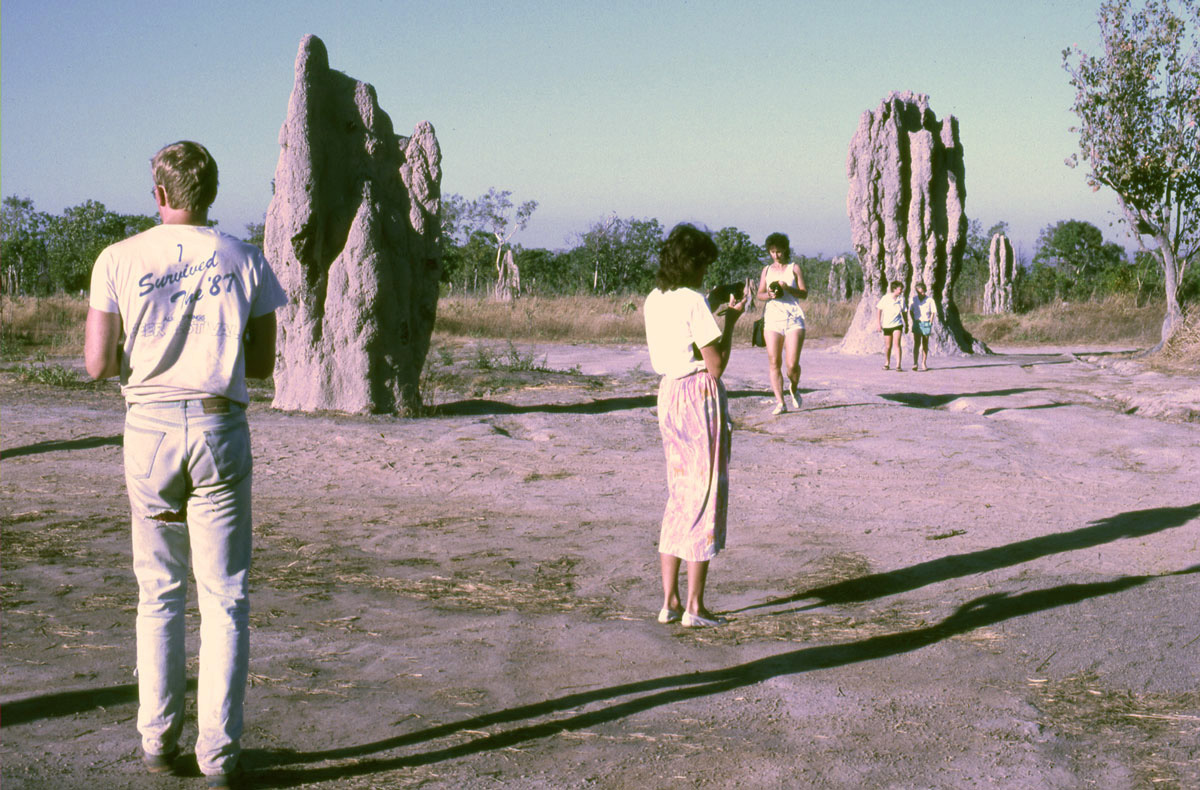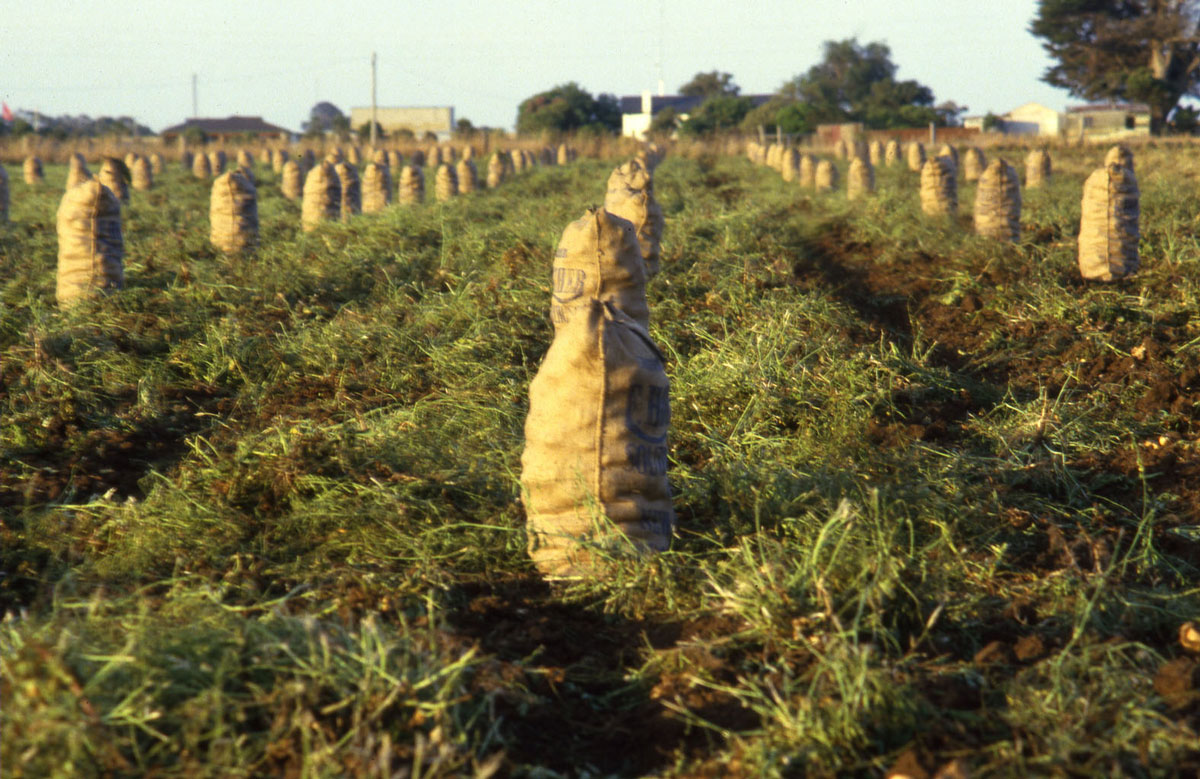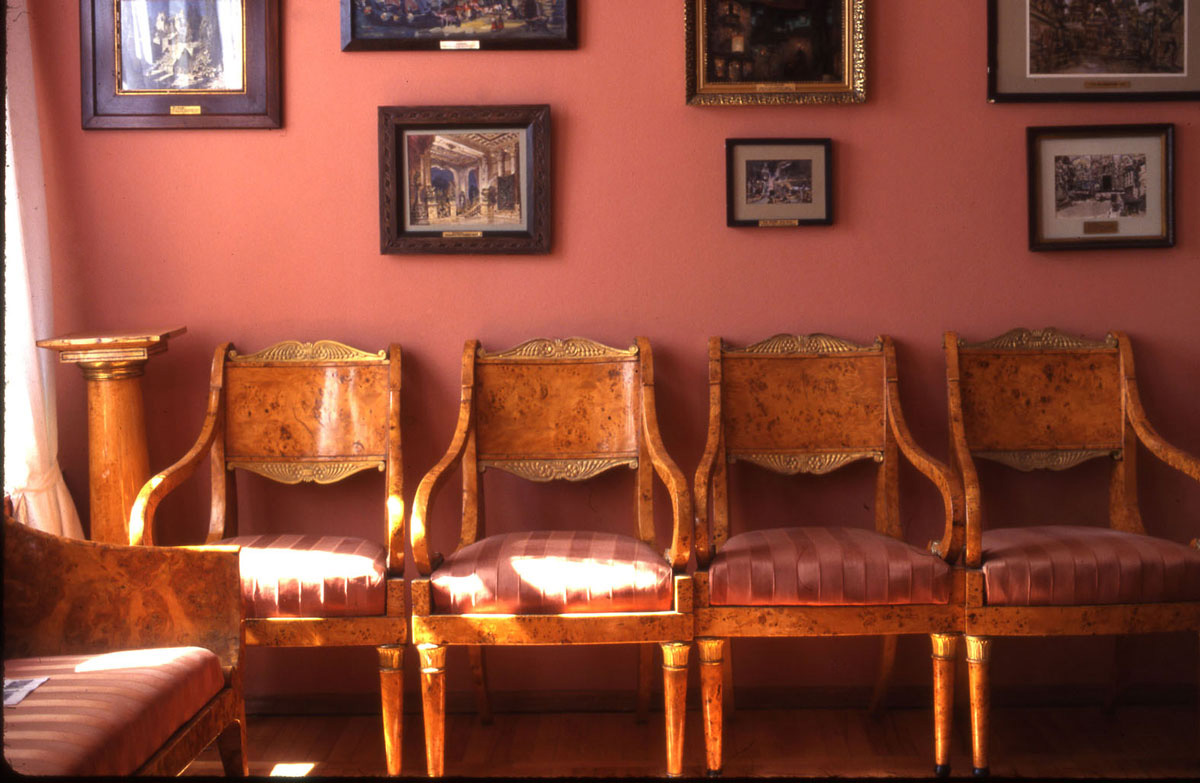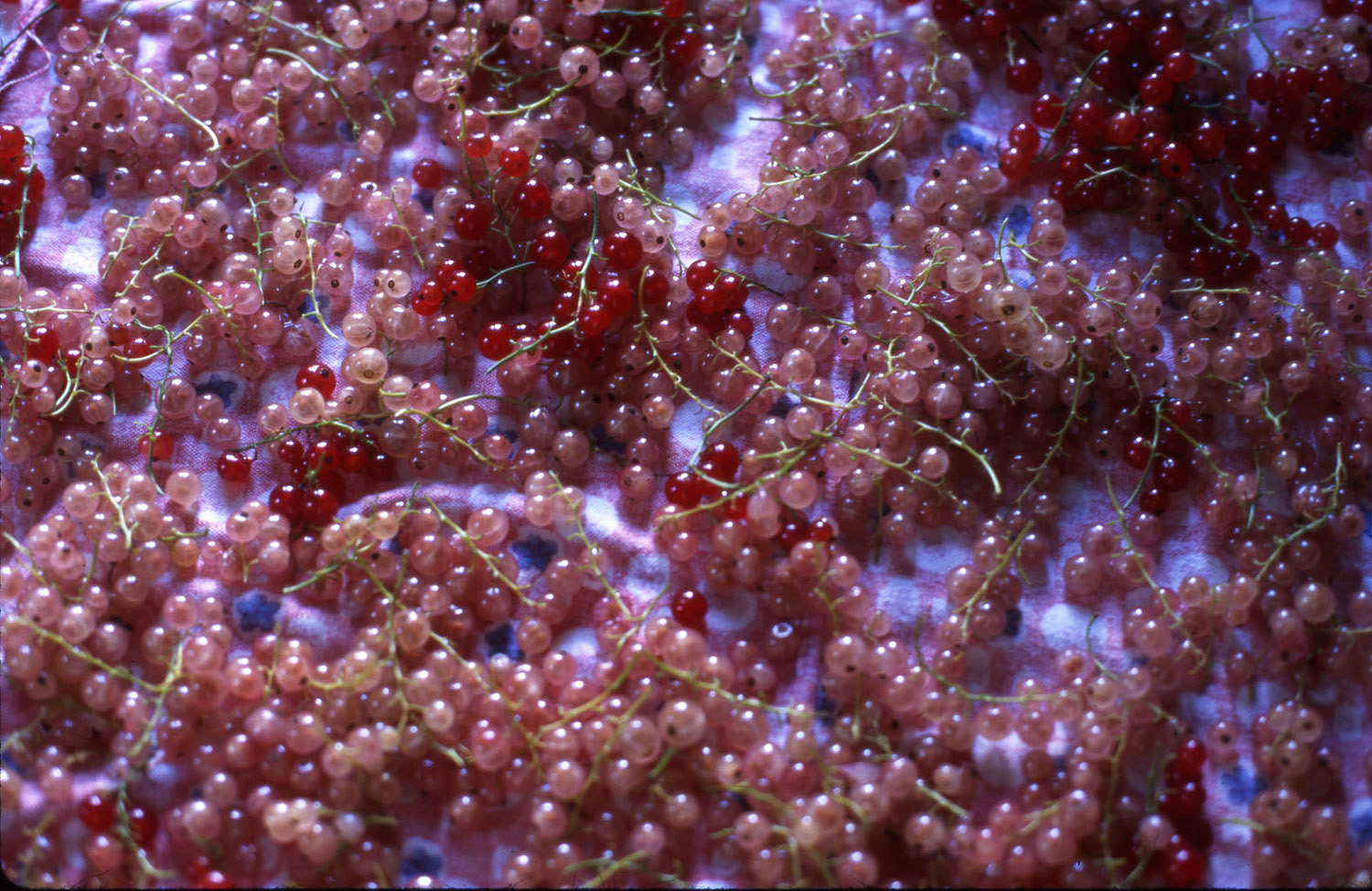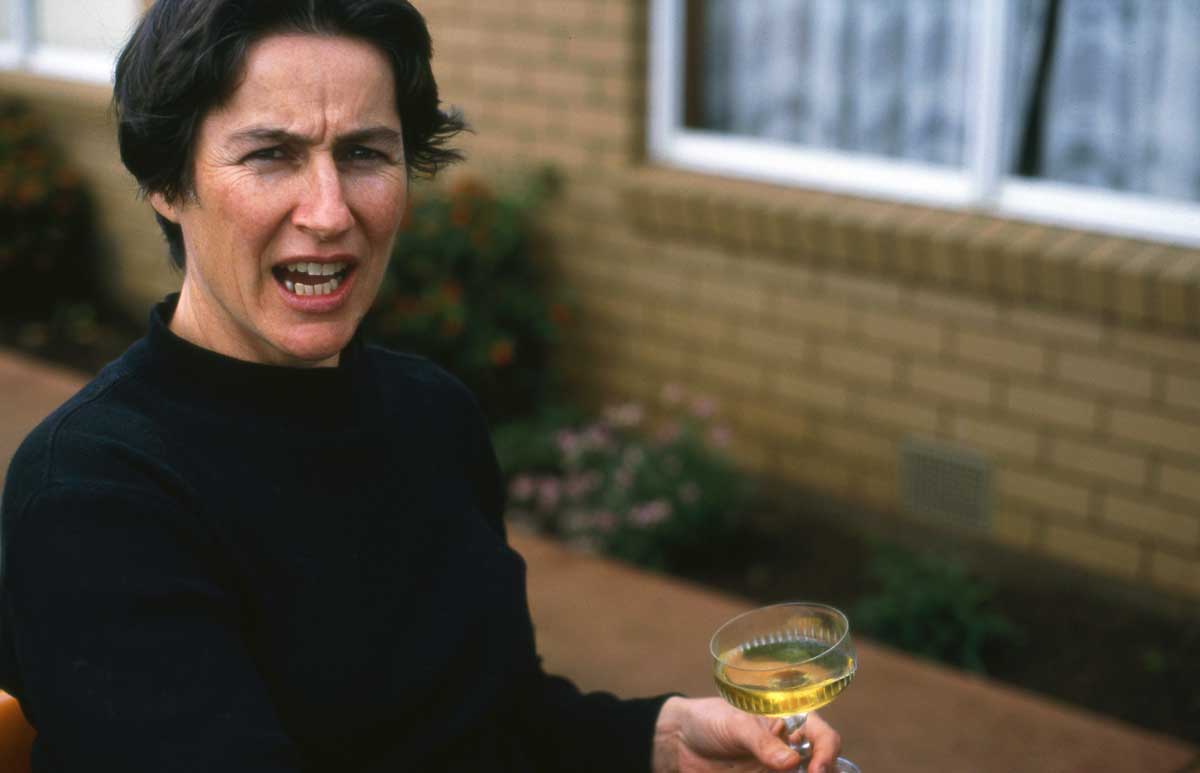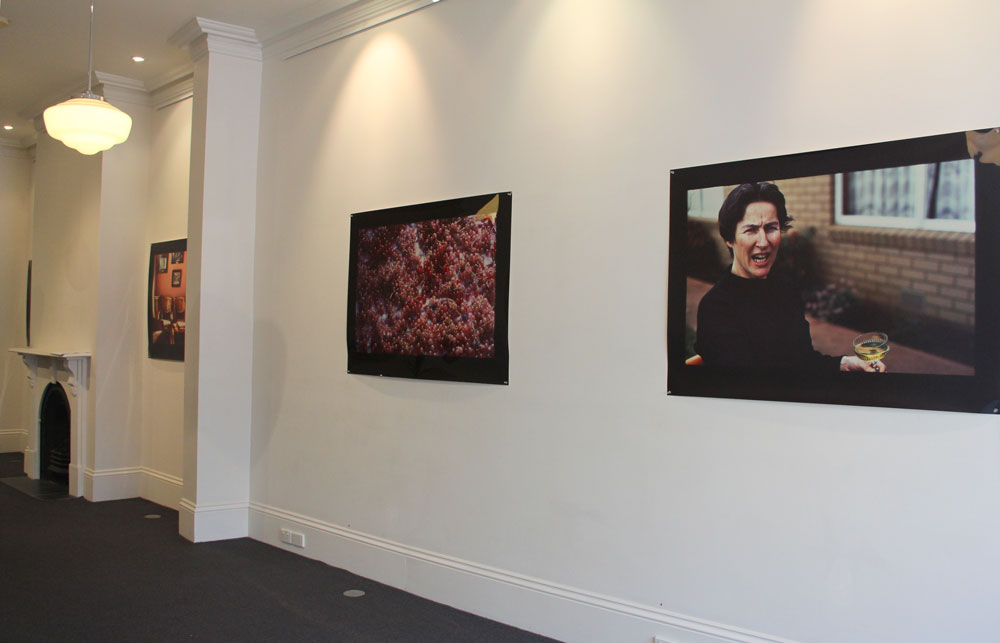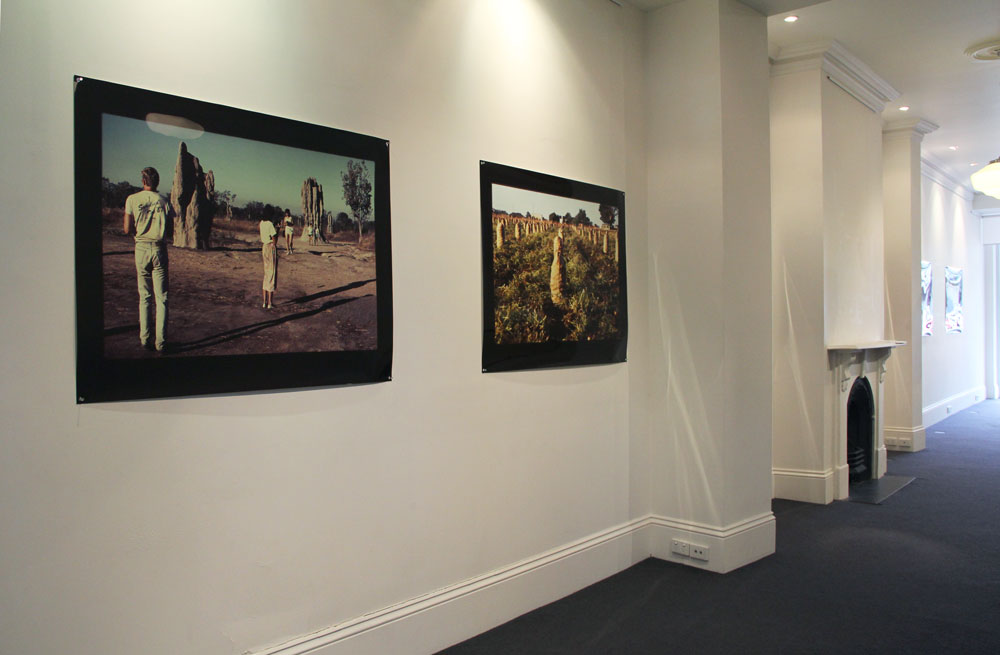Imitation of Life (2013)
ArtHere Project Space, 126 Regent St, Redfern, 2013
July 24 - Aug 3, 2013
These pictures were taken in Australia in the 1980s and in Russia in the 1990s and began as sketches for unmade film projects. The first lost film, developed in the mid 1980s and entitled The Lie of the Land, was a melodrama about migration and boat people in Australia in the immediate aftermath of Geoffrey Blainey's Warrnambool speech. The second lost film entitled Sergei Goes to Hollywood was about national film industries in the 1920s. Again, unfunded, but traces remain in images rediscovered.
A strange suspension and abstraction of time happens when you look at images again after two or three decades through major changes in photographic processes. Digital photography itself has transformed these images, retroactively impacting on analogue photography – in the same way that the present always reconstitutes the past in its own image. But it’s also a retro-futuristic effect because images from the past begin to look as if they were made very recently, maybe in a studio set-up, projecting a future that hasn’t yet come and the past appears simply as a filter that gets applied at some moment in the process. Permanent simultaneity - pure duration. Time doesn't pass, it's forever present.
The chance to blow these images up as large Cibachrome prints presented itself as an experiment, rediscovering memories from a kind of secret archive of overlooked things, ignored in the search for some other kind of significance. Filtered by time, the images seemed to have an artificiality about them.
Inanimate things seem to be animate and animate beings seem frozen. Odd connections between images arise when they are enlarged and projected. A backyard BBQ in Australia in summer; a row of Karelian birch chairs from Abramtsevo, the artist colony established by Sergey Aksakov in the 1840s, (visited by Gogol, Turgenev and Tolstoy and taken over by Savva Mamontov - the 'Moscow Medici' - in the 1870s, and used by the most important of the late 19th Century Russian artists - Repin, Polenov, Vrubel, Serov - as well as Mamontov's private opera company patronising Diaghilev among others; the summer harvest of wild berries from a dacha near Moscow, like pearls - or the glass baubles in the opening sequence of Sirk's Imitation of Life. The berries, used to make varenya, the thick, fermented jam used in tea, that can come alive, festering when shaken and oozing everywhere like blood; rows of potato sacks, an Australian summer harvest, standing, speaking of a particular past, of agricultural labour and childhood and now looking uncanny, alien; termite mounds in Kakadu, more alive than the shadowy people walking amongst them.
Review:
Greta Stevens, ‘Helen Grace, Candice Brietz’, Artlink, Vol 33, No 4, Dec, 2013

